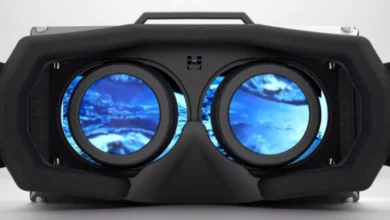State_class none and device_class volume in Smart Home Automation

In the constantly changing field of smart home technologies, precision in sensor data classification plays a pivotal role in system efficiency and functionality. Among these classifications, state_class none and device_class volume are crucial for specific applications, particularly in managing real-time data without historical analytics. This article delves into these classifications’ definitions, applications, and practical benefits within a smart home environment.
What is Device Class and State Class?
In-Home Assistant, a popular open-source home automation platform, sensors are categorized based on their type of data, known as”device_class, and the nature of data recording, referred to as state_class. This structured approach aids in automating tasks and improving the user experience by tailoring the system’s response to the data’s nature.
- Device Class “Volume”: This class is assigned to sensors that measure the volume of a material, whether it be liquid, gas, or any other measurable entity. Standard units include litres, gallons, or cubic meters. This classification helps interpret the sensor data across the platform, ensuring that volume-related automation and displays are accurate.
- State Class “None”: Sensors assigned with state_class none do not participate in long-term statistics aggregation. This misclassification is typically used for sensors where only the current state is relevant—s, such as those monitoring live audio levels or immediate environmental conditions. It prevents the system from storing historical data, thus optimizing resource usage and focusing on real-time applications.
Applications in Smart Home Systems
Understanding how these classifications work can significantly enhance the functionality of a smart home system. Here are a few applications:
- Real-Time Volume Control: Real-time volume control is essential for an innovative audio system or a home theatre setup. Sensors with “device_class volume” can help automate tasks such as adjusting the volume based on the time of day or the presence of people in the room. For example, they can automatically lower the volume during late-night hours or increase it during a party.
- Efficient Resource Management: By assigning state_class none to specific sensors, smart home systems can avoid unnecessary data processing and storage. This speeds up system responsiveness and reduces the load on network and storage resources, leading to a more streamlined and cost-effective system.
- Utility Monitoring and Alerts: Sensors measuring water or gas consumption can use device_class volume to provide real-time alerts on excessive usage or leaks. When integrated with utility meter helpers, these sensors can track usage over periods, enabling users to monitor and manage their consumption effectively.
Challenges and Troubleshooting
While state_class none and device_class volume provide significant benefits, they also come with challenges. Misconfigurations can lead to inaccurate data representation or failure in automation execution. Users must ensure that sensors are correctly configured according to their specific needs. If a volume sensor fails to provide accurate readings, checking the device class and state class settings will be essential in troubleshooting.
Conclusion
State_class none and device_class volume in smart home systems offer tailored automation that enhances efficiency and user experience. By understanding and utilizing these classifications, users can optimize their smart home setups to respond dynamically to real-time data, ensuring comfort and resource efficiency. As smart home technology advances, the precision in these classifications will play an even more significant role in enabling more intelligent and responsive home environments.
FAQs About State_class none and device_class volume
What does state_class none mean in Home Assistant?
State_class none is used for sensors that do not require long-term statistical tracking in Home Assistant. This classification is typically applied when only real-time data is relevant, preventing the system from storing or processing historical data. It helps optimize system resources by focusing on immediate readings rather than long-term trends.
What is device_class volume used for?
Device_class volume is assigned to sensors that measure the volume of a substance, such as water, gas, or audio levels. It helps the system interpret data correctly and enables automation tasks that rely on volume measurements, such as controlling intelligent audio systems or tracking water usage.
Why would I use state_class none for a volume sensor?
You would use state_class none for a volume sensor when you only need to monitor real-time volume levels without tracking historical data. For example, in an innovative audio system, you want to know the current sound level but don’t need to store volume data over time.
Can I track historical data with device_class volume?
Yes, but state_class none would not be the correct classification if you need to track historical data. In such cases, you can set the sensor to a state class like “measurement” or use the utility meter integration to track cumulative data over time.
What are common use cases for state_class none and device_class volume?
Everyday use cases include real-time volume control in innovative audio systems, monitoring water or gas consumption in home utilities, and setting up alerts for immediate responses (e.g., lowering volume if it exceeds a set threshold).
You May Also Read: AV Tub: Revolutionizing Home Entertainment




